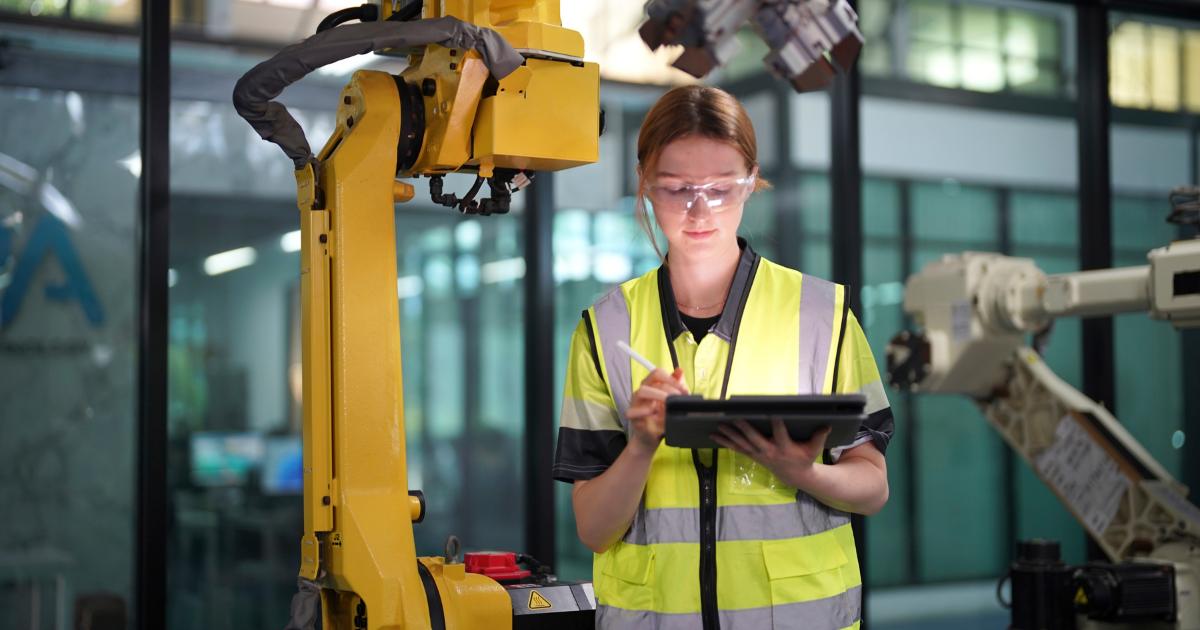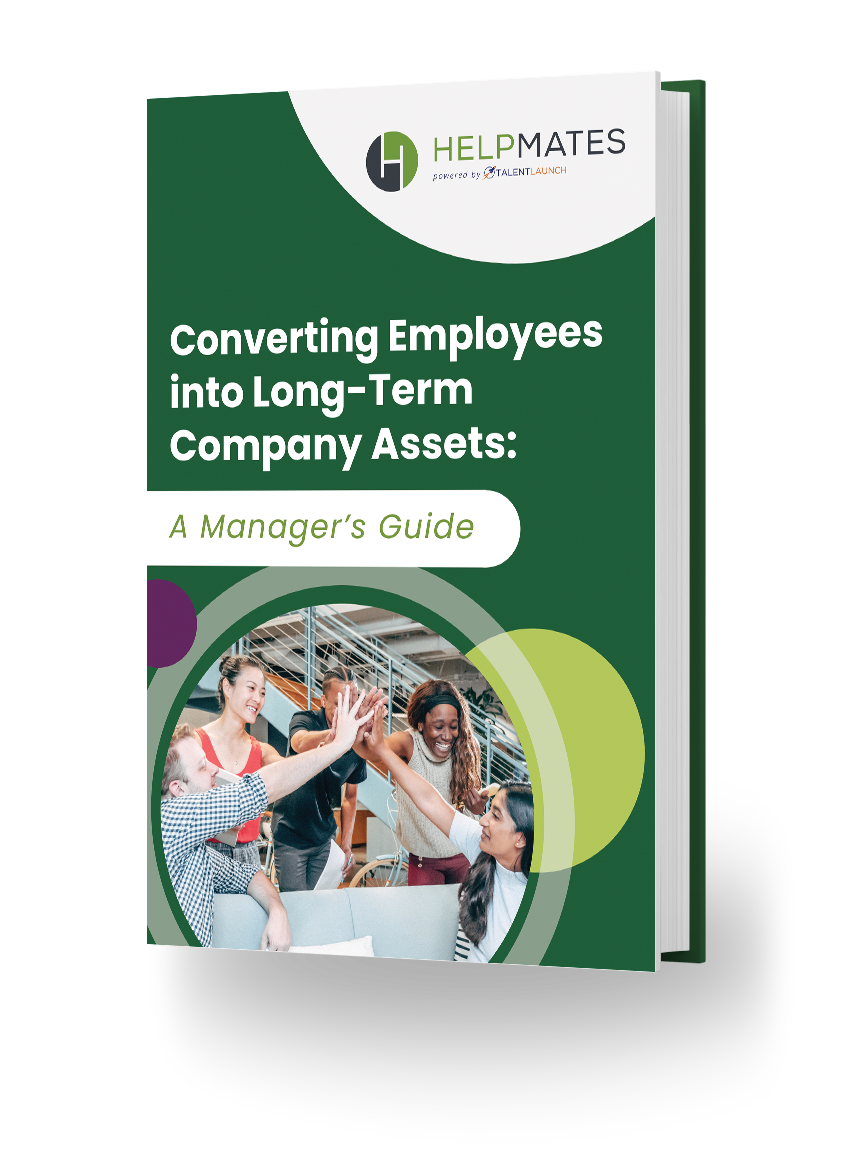Artificial intelligence has become the newest team member in HR departments across California. From résumé screening and video interviews to tools that gauge employee engagement, AI promises faster hiring and smarter decisions—at least when used the right way.
But with great power comes great…compliance risk. (Sorry, Spidey.)
For California employers, adopting AI in hiring and workplace decisions means navigating a complex web of privacy rules, anti-bias laws, and transparency requirements.
Our state doesn’t shy away from regulation, and is known for leading the way in worker protections. That extends to how companies can use AI in hiring decisions. From anti-discrimination protections to privacy rights, our state makes one thing crystal clear: if you’re using AI to make decisions about people, you better do it thoughtfully and legally.
This guide breaks down what HR professionals need to know about using AI tools responsibly and compliantly—not just for hiring, but also for managing and engaging your workforce.
What California Law Says about Using AI in Hiring
FEHA & Automated Decision Systems
At the core of California’s approach to AI in employment is a commitment to fairness, transparency, and accountability.
That’s especially clear in new rules approved by the Civil Rights Council, requiring employers to examine the potential for discrimination when using automated decision-making systems (ADS).
These regulations, which potentially take effect in July 2025, mandate that both employers and third-party vendors test their AI tools for bias and retain four years of documentation for things like:
- Résumés
- Algorithms
- Decision-making criteria
In California’s language, these tools include any computational process used to influence employment decisions—whether based on machine learning, predictive algorithms, or statistical models.
The goal? Keep tech from repeating the same old human mistakes and make sure discrimination doesn’t get an algorithmic makeover.
However: Even if your AI tools are developed or hosted by a third-party vendor, you’re still responsible under FEHA for how those tools are used in employment decisions.
CCPA/CPRA + ADMT Notice
With privacy another major concern, the California Consumer Privacy Act (CCPA), was created and later updated and strengthened under the California Privacy Rights Act (CPRA). The privacy law requires employers to notify job applicants when automated decision-making tools are used that may significantly affect their employment.
This includes explaining what data is being collected, how it’s used, and whether candidates can access or contest the outcome. Proposed updates may go even further, offering applicants the option to opt out of certain types of automated decisions altogether.
While some of these requirements are still being finalized, the direction is clear: AI in hiring is a regulated practice in the Golden State. It requires careful planning, thorough documentation, and ongoing oversight.
California’s AI Transparency Act, which went into effect in January 2024, reinforces these requirements by mandating disclosure whenever AI is used to make high-impact decisions; employment included.
Pending Legislation
And there’s more on the horizon. CA S.B. 7 (2025–2026)—focused specifically on the use of Automated Decision Systems (ADS) in employment—could introduce new rules around purpose limitations, bias audits, and employee rights.
For example, employers may be required to notify any worker affected by an ADS-driven decision and provide a form to appeal within 30 days.
Other proposed bills, like A.B. 1018 (Automated Decisions Safety Act) and S.B. 468 (High-Risk Artificial Intelligence Systems), could raise the bar even more—adding opt-out provisions, bias audit mandates, and limits on how far AI surveillance can go.
Common AI Pitfalls That Lead to Legal Trouble
Algorithmic Bias
AI learns from past data, so if that data reflects historical discrimination, the tool may carry those patterns forward. This is algorithmic bias, and it’s one of the top concerns for regulators with AI in hiring.
Why? Because it could mean filtering out qualified candidates based on traits like age, gender, or ethnicity.
For example: Imagine your AI screening tool is trained on resumes from your past top performers. If your historical workforce skewed heavily male, the tool might start favoring resumes that reflect male-associated traits—such as specific keywords, leadership styles, or even alma maters—without explicitly filtering by gender.
The bias is subtle but real, and it could result in qualified female candidates being overlooked without any manual review.
Reputational risk aside, this may still violate FEHA and Title VII—even if the bias is unintentional or the tool was built by a third party.
Black Box Algorithms
Another issue is the use of so-called “black box” algorithms: tools that deliver results without a clear explanation of how decisions are made.
If a candidate is rejected based on an AI recommendation and there’s no clear rationale, that opens the door to legal challenges and undermines trust in the hiring process.
For example: Your company implements an AI tool to assess job applicants based on written responses. Over time, you notice that candidates with strong qualifications are being rejected, but the platform offers no explanation.
When questioned, the vendor simply states that the model “weighs multiple linguistic factors” without elaborating. This lack of transparency leaves your HR team unable to defend their hiring decisions, creating compliance risk and damaging candidate trust.
Regulators increasingly expect employers to be able to justify and explain how AI-driven decisions are made, particularly when those decisions affect employment opportunities.
AI Video Interviews + Privacy Concerns
Video-based AI tools present an additional layer of risk.
These platforms often analyze facial mapping, speech patterns, and body language—and may rely on biometric data to do so.
In California, collecting or analyzing biometric information without proper notice and consent could violate the CCPA, especially if the data is stored or shared with a third party.
Consider this scenario: Your HR team uses an AI video interview tool that scores candidates based on facial expressions and tone of voice. The vendor automatically stores that data to “improve accuracy over time,” but doesn’t offer a way for candidates to opt out.
If you don’t explicitly disclose this data collection in writing, it may fall under California’s definition of sensitive personal data. That could trigger strict consent and disclosure requirements under the CCPA and CPRA, and you could face serious compliance violations.
In the Golden State, transparency and consent aren’t just suggestions or best practices. They’re legal requirements (and a whole vibe).
Red Flags to Watch for in AI Hiring Tools
Not all AI platforms are created with compliance in mind. Here are a few red flags to look out for:
- No transparency into how hiring decisions are made
- Inability to provide documentation of a bias audit
- Fully automated decision-making with no human oversight
- No option for candidates to opt out, review results, or request an explanation
- Collection of sensitive or biometric data without clear disclosure or retention policies
If a vendor raises one or more of these concerns, dig deeper to decide if they are the right fit for your compliance-conscious HR team.
Smart Questions to Ask AI Vendors
The following questions can help you determine whether an AI tool aligns with California’s legal standards and your organization’s values.
Can candidates access the logic or rationale behind automated decisions?
Why it matters: If a candidate asks why they were rejected, you need to be able to provide a meaningful answer. Tools that can’t explain their decision-making process not only erode candidate trust but also raise red flags for regulators who expect transparency in automated employment decisions.
Has the system been independently audited for bias?
Why it matters: If a tool hasn’t been tested for bias by a third party, you may not know whether it’s unintentionally overlooking certain groups. A lack of external validation makes it harder to detect hidden patterns that could lead to discriminatory patterns—and harder to defend your decisions if challenged.
Are final decisions made with human input, or is the process fully automated?
Why it matters: A staffing team once used a tool that automatically rejected candidates who didn’t meet a GPA threshold, something programmed years earlier by default. One qualified applicant was screened out due to a low GPA from a decade ago, despite years of experience and relevant skills. No one on the team realized it until a manual review caught the pattern. That kind of unchecked automation can cost you top talent and open the door to claims of unfair hiring practices.
What types of data are collected, and how long is it stored?
Why it matters: Some tools collect more than just application data. They might track facial movements, voice tone, or typing speed. If that data includes biometric or sensitive personal information, you’re responsible for how it’s stored, disclosed, and deleted under CCPA. Not knowing puts your organization at legal risk.
These questions reduce your company’s liability and help build a hiring process that is efficient and equitable.
Responsible AI Use Beyond Hiring: Performance and Engagement
While much of the regulatory spotlight is on AI-powered recruitment tools, many California employers are also exploring AI in other areas of the employee lifecycle, like performance management and employee recognition and engagement.
Tools that analyze productivity data, flag potential burnout, or recommend development plans can be valuable, but they come with the same legal and ethical responsibilities as AI hiring platforms.
AI and Employee Monitoring
Using AI to monitor employee performance may trigger privacy concerns under California’s privacy laws, especially if the system collects sensitive information like keystroke data, screen time, or internal communications.
And if AI is used to guide decisions about promotions, discipline, or compensation, those systems may also fall under anti-discrimination rules like FEHA.
Employer Next Steps
Start by documenting exactly what monitoring tools are in use, being transparent about what data is being gathered, how it’s being used, and how long it will be stored. Then share this documentation with employees in plain language, ideally through an updated privacy notice, workplace monitoring policy, or standalone consent form.
- For job applicants, best practice (and in some states, a legal requirement) is to include a disclosure pop-up at the start of the application process. It should explain that AI may be used, how it will be used, and—when applicable—offer an option to opt out in favor of a human-led evaluation process.
- For new hires, many employers choose to include this in onboarding paperwork or annual HR policy updates, with a signature or digital acknowledgment to confirm understanding and consent.
- For current employees, notification may depend on the specific tools you’re using. If performance evaluation software or generative AI tools (like ChatGPT) are involved, your policy should:
- Acknowledge monitoring: Make it clear that any uploaded information—like productivity data or AI-assisted outputs—can and will be reviewed.
- Set guardrails: Prohibit uploading confidential or proprietary information, such as client lists, financial data, or internal strategy documents.
- Require consent: Have employees acknowledge this policy and confirm they understand the expectations.
If a tool evaluates employee behavior in a way that may affect compensation, advancement, or disciplinary decisions, make sure:
- A human is reviewing the insights before any final decisions are made
- Employees are aware of how the AI contributes to those decisions
- There’s a process in place for employees to ask questions or challenge the outcome
Being transparent about your company’s AI practices is more than just good compliance. It’s a trust-builder. Employees and applicants alike are more likely to support new tools when they understand what’s being tracked, why it matters, and how it will (or won’t) affect them.
AI Tools for Employee Engagement and Retention
When implemented with employee buy-in and agency in mind, AI becomes a strategic asset, not a surveillance risk. The difference lies in how intentionally and openly they’re implemented.
To use AI responsibly for engagement and retention, HR leaders should follow three key principles.
Transparency
Clearly explain what AI tools are being used, what data they rely on (e.g., survey responses, engagement scores, performance trends), and how those insights are used to inform HR actions. This communication should be built into onboarding materials, employee handbooks, or digital dashboards (not buried in fine print).
Fairness
Make sure the AI isn’t unintentionally biased. For example, if an AI flags someone as a “flight risk” based on tenure or attendance without considering context, it could reinforce inequities. Regularly audit AI outputs and supplement them with human judgment to avoid one-size-fits-all decisions.
Consent
While explicit opt-in may not always be required, employees should have the ability to understand what data is being collected, ask questions, and opt out of non-essential tracking. Giving them this agency reinforces trust and improves adoption.
Balancing Innovation With Human Judgment
AI can be a powerful HR tool, but it’s not a replacement for people. The most effective (and legally sound) approach is to use AI to support decision-making, not substitute it.
A well-balanced process preserves the candidate experience, reduces the risk of discriminatory outcomes, and allows recruiters to catch nuances an algorithm might miss.
The human touch still matters. Candidates want to feel seen and heard, not sorted and filtered out by a machine. Maintaining human oversight supports inclusive hiring practices and delivers better outcomes for both employers and job seekers.
How Helpmates Can Support Your AI-Smart Hiring Strategy
At Helpmates, we understand that the future of hiring includes technology. And we’re a big adopter of using various technologies through our parent company TalentLaunch. It’s what sets us apart from other staffing agencies!
But we believe people should always come first. That’s why we take a thoughtful approach to candidate vetting, combining modern tools with human expertise to help you build a more compliant, equitable hiring process from start to finish.
Because we stay up to date on California employment law, we’re able to support your HR team with guidance on AI tools, bias mitigation strategies, and process improvements.
Whether you’re just starting to explore AI in hiring or looking to refine your existing practices, Helpmates can help you strike the right balance.
You don’t have to choose between innovation and integrity. And with Helpmates as your partner, you can have both—building a hiring process that’s efficient, ethical, and tailored to California’s forward-thinking HR landscape.






